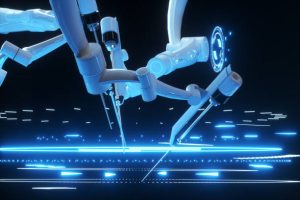Robotic surgery, also called robotic surgery, are various forms of non-surgical procedures performed with robotic systems under general anaesthesia. This is becoming a more popular way of performing surgery and is likely to become more widely used in future years. Robotic surgery Adelaide has been developed over the past ten years to overcome the limits of present-day minimally invasive surgical methods and improve physicians’ abilities to perform open surgery without using a robotic device.
The most common area for robot-assisted surgery is in Adelaide Hip & Knee Center, where small incisions are made, and the surgeon uses a robotic system to perform the task of stitching together the various parts of a heart. Another specialty that robotic surgery is currently being used in is paediatric surgery, where the accuracy of the robotic instruments used allows for smaller incisions and less amount of scarring than is possible with standard procedures. Small children often suffer badly during operations because of their lack of experience with such complex procedures. By using a robotic system to perform these procedures on a smaller scale, doctors can minimize any potential risks while still achieving the desired results.
In addition to performing minimally invasive surgery, robotic surgery Adelaide can also be used to perform various other tasks. One such task is that of an anaesthesia. Using a wireless system, the surgeon can place the patient inside a chamber, where an anaesthesia will be administered. The anaesthesia, however, does not have to be administered via traditional methods, as some anaesthesia require very high doses of the drug. Instead, a robotic system is programmed to deliver the drug automatically, without any anaesthesia. Because of this, patients remain unconscious throughout the procedure.
 Another benefit of robotic surgery is that it allows for a much smaller surgical site. Because the surgical instruments are so small, it takes much less time to place them in the exact location required, making the whole procedure much quicker than if the surgical tools were larger. This means less pain is involved, making recovery much easier than if the area was larger. Since the instruments are so small, smaller incisions are also far less noticeable.
Another benefit of robotic surgery is that it allows for a much smaller surgical site. Because the surgical instruments are so small, it takes much less time to place them in the exact location required, making the whole procedure much quicker than if the surgical tools were larger. This means less pain is involved, making recovery much easier than if the area was larger. Since the instruments are so small, smaller incisions are also far less noticeable.
When a doctor wants to cut back on costs, he or she may opt to create a mini operating room by having surgeons perform robotic surgery from a laptop on the side. This way, the actual cutting of the surgical instruments occurs in the same area as the surgery itself and is done right there in real-time. The laptop can also display images and videos to patients to show them what they are going to see in the operating room. Because the laptops can connect to the operating room’s video display, smaller mistakes can be easily corrected before the actual surgery begins.
In the future, robotic surgery in Adelaide Hip & Knee Center could very well be replacing many surgeon-led surgical procedures. This is because the cost of these types of surgeries is much lower than they are today, and surgeons can get the work done faster and more efficiently. The future may bring even more advanced surgical techniques that will enable doctors to perform these operations with a much smaller field of focus. Smaller arms will soon be replacing many of the traditional surgical tools, and perhaps someday, robots will be able to operate in the “oven” area of the abdomen, where incisions are made to release organs. This would be a new and very welcome advance in the field of cosmetic surgery.